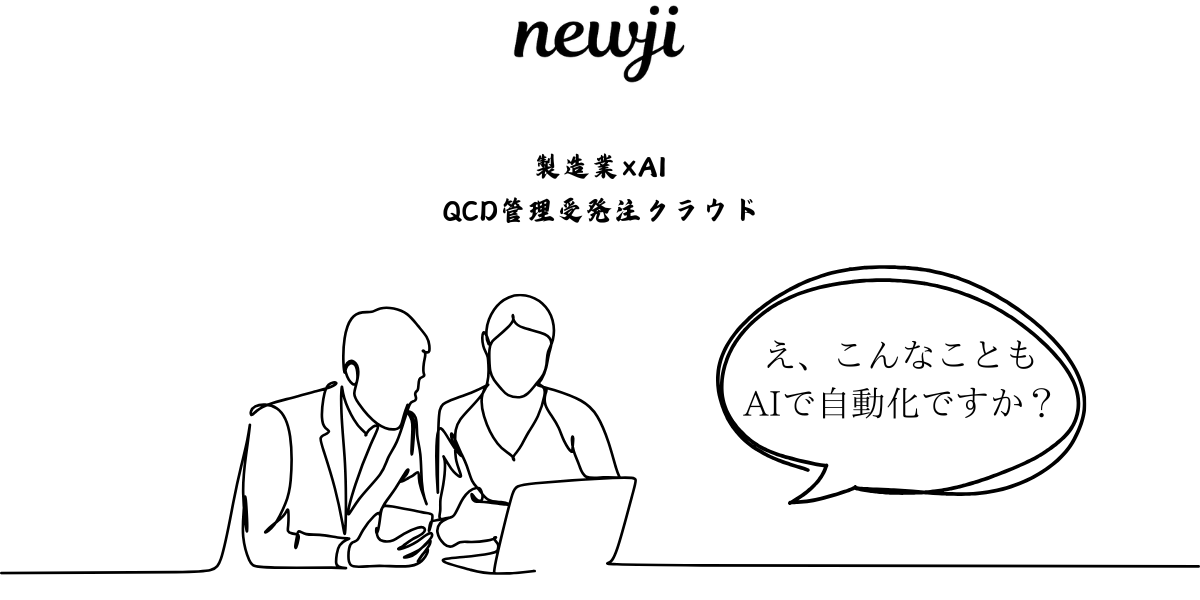- お役立ち記事
- Roadmap for Advancements in Autonomous Driving: The Latest Trends and Innovations
月間76,176名の
製造業ご担当者様が閲覧しています*
*2025年3月31日現在のGoogle Analyticsのデータより

Roadmap for Advancements in Autonomous Driving: The Latest Trends and Innovations

目次
Introduction
The landscape of transportation is undergoing a profound transformation with the advent of autonomous driving technologies. This shift promises to revolutionize not only how we travel but also the fundamental structure of industries related to automotive manufacturing, logistics, and urban planning. As companies navigate this complex and rapidly evolving field, effective procurement and purchasing strategies become crucial in securing the necessary components and technologies to stay competitive. This article explores the roadmap for advancements in autonomous driving, highlighting the latest trends and innovations, and delving into the practical aspects of procurement and purchasing within this dynamic sector.
Current State of Autonomous Driving
Autonomous driving has progressed significantly over the past decade, moving from conceptual stages to real-world applications. Today, various levels of automation are being developed and tested, with several companies actively deploying self-driving vehicles in limited capacities. The convergence of advanced sensors, artificial intelligence, and robust connectivity infrastructure has been instrumental in propelling this technology forward.
Key Technologies
Autonomous vehicles rely on a suite of technologies to navigate and operate safely. These include:
– **Sensors and Perception Systems:** Lidar, radar, cameras, and ultrasonic sensors work together to provide a comprehensive understanding of the vehicle’s environment.
– **Artificial Intelligence and Machine Learning:** These technologies enable the vehicle to interpret sensor data, make decisions, and improve performance over time.
– **Connectivity:** Vehicle-to-Everything (V2X) communication facilitates interaction with other vehicles, infrastructure, and cloud services, enhancing navigation and safety.
– **Actuation Systems:** Advanced control systems manage the vehicle’s movements based on the decisions made by the AI.
Market Players
The autonomous driving market features a mix of established automotive giants and innovative technology startups. Companies like Tesla, Waymo, and Cruise are at the forefront, investing heavily in research and development to refine their autonomous systems. Additionally, numerous suppliers specialize in providing critical components and technologies essential for the development of self-driving vehicles.
Latest Trends in Autonomous Driving
The field of autonomous driving is characterized by continuous innovation and evolving trends. Staying abreast of these developments is essential for companies aiming to lead in this space.
Artificial Intelligence and Machine Learning Enhancements
AI and machine learning are central to improving the accuracy and reliability of autonomous systems. Advances in deep learning algorithms enable vehicles to better recognize objects, predict behaviors, and make more informed decisions in complex environments.
Advanced Sensor Technologies
The refinement of sensor technologies, particularly lidar and radar, has significantly enhanced the perception capabilities of autonomous vehicles. Innovations are focused on increasing the range, resolution, and reliability of these sensors, enabling better performance in diverse conditions.
Connectivity and V2X Integration
Enhanced connectivity allows autonomous vehicles to communicate with each other and with infrastructure, leading to improved traffic management and safety. V2X technologies are being integrated to facilitate real-time data exchange, which is crucial for dynamic navigation and hazard avoidance.
Electric and Hybrid Powertrains
The integration of electric and hybrid powertrains with autonomous systems is gaining traction. This synergy not only contributes to sustainability goals but also improves the efficiency and performance of self-driving vehicles.
Regulatory Developments
Regulatory frameworks are evolving to address the complexities of autonomous driving. Governments are establishing standards and guidelines to ensure safety, interoperability, and data privacy, which are essential for the widespread adoption of autonomous vehicles.
Procurement and Purchasing in Autonomous Driving
Effective procurement and purchasing strategies are critical in the autonomous driving sector, given the complexity and diversity of components and technologies involved. Companies must navigate a global supply chain to source high-quality parts while managing costs and mitigating risks.
Supplier Selection
Selecting the right suppliers is paramount to ensuring the quality and reliability of autonomous vehicle components. Criteria for selection include the supplier’s technological capabilities, financial stability, quality certifications, and ability to scale production to meet demand.
Supplier Negotiation Techniques
Negotiating favorable terms with suppliers involves understanding market dynamics and leveraging negotiation strategies. Building strong relationships, ensuring clear communication, and seeking mutually beneficial agreements are essential tactics. Additionally, companies often employ long-term contracts to secure pricing and supply continuity.
Managing Supplier Relationships
Maintaining robust relationships with suppliers fosters collaboration and innovation. Regular performance reviews, joint development initiatives, and open communication channels help in addressing challenges promptly and ensuring alignment with project goals.
Advantages and Disadvantages of Japanese Suppliers
Japanese suppliers are renowned for their quality, precision, and reliability, which are critical attributes for autonomous driving components. The benefits of partnering with Japanese suppliers include access to advanced technologies, stringent quality control, and a culture of continuous improvement.
However, there are challenges as well. Language barriers, cultural differences, and longer lead times can pose obstacles. Additionally, geopolitical factors and trade regulations may impact the procurement process. Balancing these advantages and disadvantages is crucial for optimizing the supply chain.
Market Conditions Impacting Procurement
Global market conditions, including economic fluctuations, supply chain disruptions, and technological advancements, significantly influence procurement strategies. Companies must stay informed about market trends, diversify their supplier base to reduce dependency, and implement agile procurement practices to respond to changes effectively.
Advantages and Disadvantages of Autonomous Driving
Understanding the benefits and challenges of autonomous driving is essential for stakeholders involved in its development and deployment.
Advantages
Autonomous driving offers numerous benefits, including:
– **Increased Safety:** Reduction in human error-related accidents.
– **Enhanced Efficiency:** Optimized routing and traffic management lead to reduced congestion.
– **Accessibility:** Improved mobility for individuals unable to drive.
– **Economic Benefits:** Potential reductions in transportation costs and increased productivity.
Disadvantages
Despite its potential, autonomous driving faces several challenges:
– **Technological Limitations:** Current systems may struggle in complex or unpredictable environments.
– **High Costs:** Development and implementation of autonomous technologies are expensive.
– **Regulatory Hurdles:** Evolving regulations can slow deployment.
– **Security Risks:** Vulnerabilities to cyber-attacks pose significant concerns.
Supplier Negotiation Techniques
Effective negotiation with suppliers can lead to cost savings, improved quality, and stronger partnerships. Here are some key techniques:
Preparation and Research
Thorough preparation involves understanding the supplier’s strengths, weaknesses, pricing structures, and market positions. This knowledge equips buyers to negotiate from a position of strength.
Building Trust and Rapport
Establishing a positive relationship can facilitate smoother negotiations. Trust and mutual respect encourage transparency and flexibility, leading to more favorable outcomes.
Value-Based Negotiation
Focusing on the value rather than just the price fosters collaborative solutions. Highlighting long-term partnerships and mutual benefits can lead to agreements that satisfy both parties.
Leveraging Competition
Encouraging competition among suppliers can result in better pricing and terms. Soliciting multiple bids ensures that buyers have options and can negotiate more effectively.
Flexibility and Creativity
Being open to alternative solutions, such as different payment terms or delivery schedules, can help overcome impasses and reach agreements that benefit both parties.
Market Conditions Impacting Procurement
The procurement landscape for autonomous driving is influenced by various market conditions that companies must navigate carefully.
Global Supply Chain Dynamics
Global supply chains can be affected by geopolitical tensions, trade policies, and logistical challenges. Companies must develop strategies to mitigate risks, such as diversifying their supplier base and increasing inventory buffers.
Technological Advancements
Rapid technological changes require procurement teams to stay updated and adapt sourcing strategies accordingly. Partnering with innovative suppliers can provide access to cutting-edge technologies essential for autonomous driving.
Economic Factors
Economic stability and currency fluctuations impact procurement costs and supplier pricing. Companies must implement financial strategies to hedge against these fluctuations and maintain cost predictability.
Regulatory Changes
Evolving regulations related to safety, emissions, and data privacy necessitate compliance. Procurement strategies must account for these regulations to avoid disruptions and ensure adherence to legal standards.
Best Practices for Procurement in Autonomous Driving
Adopting best practices in procurement enhances efficiency, reduces costs, and ensures the quality of autonomous driving components.
Strategic Sourcing
Strategic sourcing involves aligning procurement activities with the company’s long-term goals. This approach includes identifying key suppliers, fostering innovation partnerships, and continuously evaluating the supply base to ensure alignment with technological advancements.
Risk Management
Effective risk management involves identifying potential supply chain disruptions and developing contingency plans. Diversifying suppliers, maintaining safety stocks, and implementing robust monitoring systems are essential components of a comprehensive risk management strategy.
Quality Control
Maintaining high-quality standards is critical for autonomous driving components. Implementing stringent quality control measures, conducting regular audits, and fostering a culture of continuous improvement ensure that suppliers meet the required specifications and performance criteria.
Collaboration and Communication
Close collaboration and open communication with suppliers facilitate the timely resolution of issues and promote innovation. Regular meetings, joint development projects, and transparent information sharing strengthen the supplier relationship and drive mutual success.
Sustainability and Ethical Sourcing
Incorporating sustainability and ethical considerations into procurement practices enhances the company’s reputation and aligns with global environmental goals. Sourcing materials responsibly, reducing the carbon footprint, and ensuring fair labor practices are integral to sustainable procurement.
Future Outlook
The future of autonomous driving is poised for significant advancements, driven by continuous innovation and strategic procurement practices. As technologies evolve, companies must adapt their procurement strategies to secure the necessary components and partnerships that will enable the next generation of autonomous vehicles.
Integration of Emerging Technologies
Emerging technologies such as quantum computing, advanced AI, and next-generation sensors will further enhance the capabilities of autonomous vehicles. Procurement teams must stay ahead by sourcing cutting-edge components and collaborating with innovative suppliers.
Expansion of Global Markets
As autonomous driving technologies mature, the market will expand globally, necessitating international procurement strategies. Understanding regional market conditions, regulatory environments, and cultural nuances will be essential for successful global expansion.
Enhanced Collaboration Across Industries
The development of autonomous driving will require collaboration across various industries, including automotive, technology, telecommunications, and infrastructure. Procurement professionals will need to foster cross-industry partnerships to drive innovation and achieve common goals.
Focus on Cybersecurity
With the increased connectivity of autonomous vehicles, cybersecurity will become a paramount concern. Procurement strategies must prioritize sourcing secure components and working with suppliers that adhere to stringent cybersecurity standards.
Continuous Improvement and Innovation
The autonomous driving sector will continue to evolve, necessitating a commitment to continuous improvement and innovation. Procurement teams must embrace agile practices, encourage supplier innovation, and remain adaptable to changing technological landscapes.
Conclusion
The roadmap for advancements in autonomous driving is marked by rapid technological progress and evolving market dynamics. Effective procurement and purchasing strategies play a crucial role in navigating this complex landscape, ensuring that companies can secure the necessary components and partnerships to drive innovation and maintain competitiveness. By understanding the latest trends, leveraging best practices, and addressing the unique challenges of the autonomous driving sector, companies can successfully contribute to shaping the future of transportation.
 資料ダウンロード
資料ダウンロード
QCD管理受発注クラウド「newji」は、受発注部門で必要なQCD管理全てを備えた、現場特化型兼クラウド型の今世紀最高の受発注管理システムとなります。
 ユーザー登録
ユーザー登録
受発注業務の効率化だけでなく、システムを導入することで、コスト削減や製品・資材のステータス可視化のほか、属人化していた受発注情報の共有化による内部不正防止や統制にも役立ちます。
 NEWJI DX
NEWJI DX
製造業に特化したデジタルトランスフォーメーション(DX)の実現を目指す請負開発型のコンサルティングサービスです。AI、iPaaS、および先端の技術を駆使して、製造プロセスの効率化、業務効率化、チームワーク強化、コスト削減、品質向上を実現します。このサービスは、製造業の課題を深く理解し、それに対する最適なデジタルソリューションを提供することで、企業が持続的な成長とイノベーションを達成できるようサポートします。
 製造業ニュース解説
製造業ニュース解説
製造業、主に購買・調達部門にお勤めの方々に向けた情報を配信しております。
新任の方やベテランの方、管理職を対象とした幅広いコンテンツをご用意しております。
 お問い合わせ
お問い合わせ
コストダウンが利益に直結する術だと理解していても、なかなか前に進めることができない状況。そんな時は、newjiのコストダウン自動化機能で大きく利益貢献しよう!
(β版非公開)









